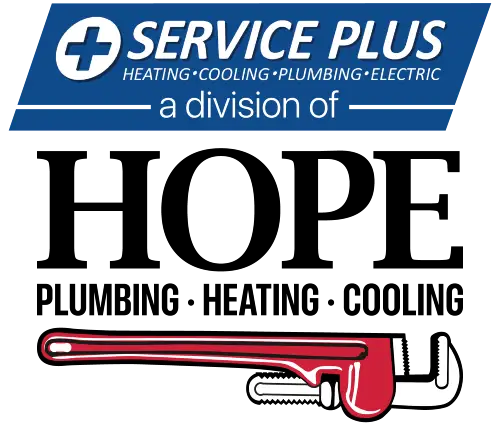You turn on the shower, expecting a steady stream of warm water to wake you up. Instead, you get a weak drizzle that barely rinses the shampoo out of your hair. Or maybe your kitchen faucet struggles to fill a pot, leaving you standing there wondering what went wrong.
Low water pressure turns simple tasks into slow, frustrating chores. The problem could be lurking in your plumbing system, or it might have something to do with your water supply. Either way, figuring out the cause is the first step toward getting your water flowing again.
Service Plus is here to explain in simple terms the most typical reasons behind low water pressure, so you can tackle the problem and never deal with it again.
Plumbing Issues
Low water pressure doesn’t always mean a major plumbing disaster, but even small problems can add up fast. If your pipes have been around for a while, corrosion could be making it harder for water to get through. Sediment and minerals? They love to build up inside pipes, turning what should be a steady stream into an unimpressive trickle.
Leaks are another sneaky culprit — when water escapes before it reaches your tap, pressure drops, leaving you wondering why your shower went from “invigorating” to “underwhelming.”
Water Supply Problems
When weak water pressure affects every faucet in your home, the problem might not be inside your plumbing system. Homes connected to a municipal water supply depend on the city’s infrastructure to deliver steady pressure. If your neighbors are dealing with the same issue, the cause is likely outside your property.
Pressure Regulator Malfunctions
Some homes rely on a pressure-reducing valve to stabilize water pressure. This device prevents excessive force from damaging pipes and appliances. When it fails, pressure may drop unexpectedly or become inconsistent. Unfortunately, a faulty pressure regulator affects the entire plumbing system. If water trickles from every faucet, this component could be the culprit.
Shut-Off Valve Problems
A partially closed water meter valve can cause weak water pressure throughout your home. This valve, typically located near the main water supply line, controls how much water enters your plumbing system. If someone recently adjusted it — such as during maintenance or an emergency shut-off — it might not have been reopened all the way. Even a slight restriction can limit water flow, leading to noticeable drops in pressure.
Sometimes, a slight adjustment during routine maintenance or even an accidental bump can leave it in the wrong position. A quick check can confirm if this is the issue. If you’re unsure how to inspect or adjust it, a plumber can take care of it and make sure everything is set correctly.
Water Heater Issues
If your hot water pressure feels weak while the cold water runs just fine, the problem likely starts with your water heater. Over time, sediment builds up inside the tank, taking up space and slowing down water flow. This buildup forces the system to work harder, creating blockages that reduce pressure. Flushing the tank regularly helps clear out sediment, but if the problem persists, a failing pressure switch or an aging unit could be to blame.
Well System Issues (For Private Wells)
Homes with private wells rely on pumps and pressure tanks to keep water flowing consistently. When any part of that system falters, low pressure follows. A failing pressure switch can cause erratic flow, while sediment buildup inside the system clogs pipes and slows water movement.
A booster pump can help maintain strong flow, but if it malfunctions, pressure drops throughout the home. Similarly, pressure tanks regulate water output, and when they lose efficiency, faucets and showers start to trickle instead of pour.
Why You Should Always Call a Plumber for Low Water Pressure
Finding the cause of low water pressure isn’t always straightforward. Some issues, like leaks or pipe corrosion, hide behind walls or underground, making them tough to spot without the right tools. Professional plumbers can inspect your system, check for hidden damage, and determine whether the problem lies within your home’s plumbing or the municipal water supply.
Attempting a DIY fix can also be frustrating, especially when the real issue isn’t obvious. Corroded pipes restrict water flow from the inside, and replacing the wrong part can lead to wasted time and unnecessary costs. A plumber can quickly diagnose the problem and apply the right solution, saving you from guesswork and long-term damage.
Let Service Plus Solve Your Water Pressure Problems!
Low pressure turns simple tasks into irksome experiences. Whether the issue stems from old pipes, faulty regulators, or supply disruptions, Service Plus offers solutions. Our team can find the source of weak flow and restore strong, steady pressure to your home.
We’re the ones to trust to restore your water pressure to its former glory, offering a range of plumbing and sewer services across Indianapolis. Give us a call today, and let us make your water pressure troubles a thing of the past!
 Skip to content
Skip to content

